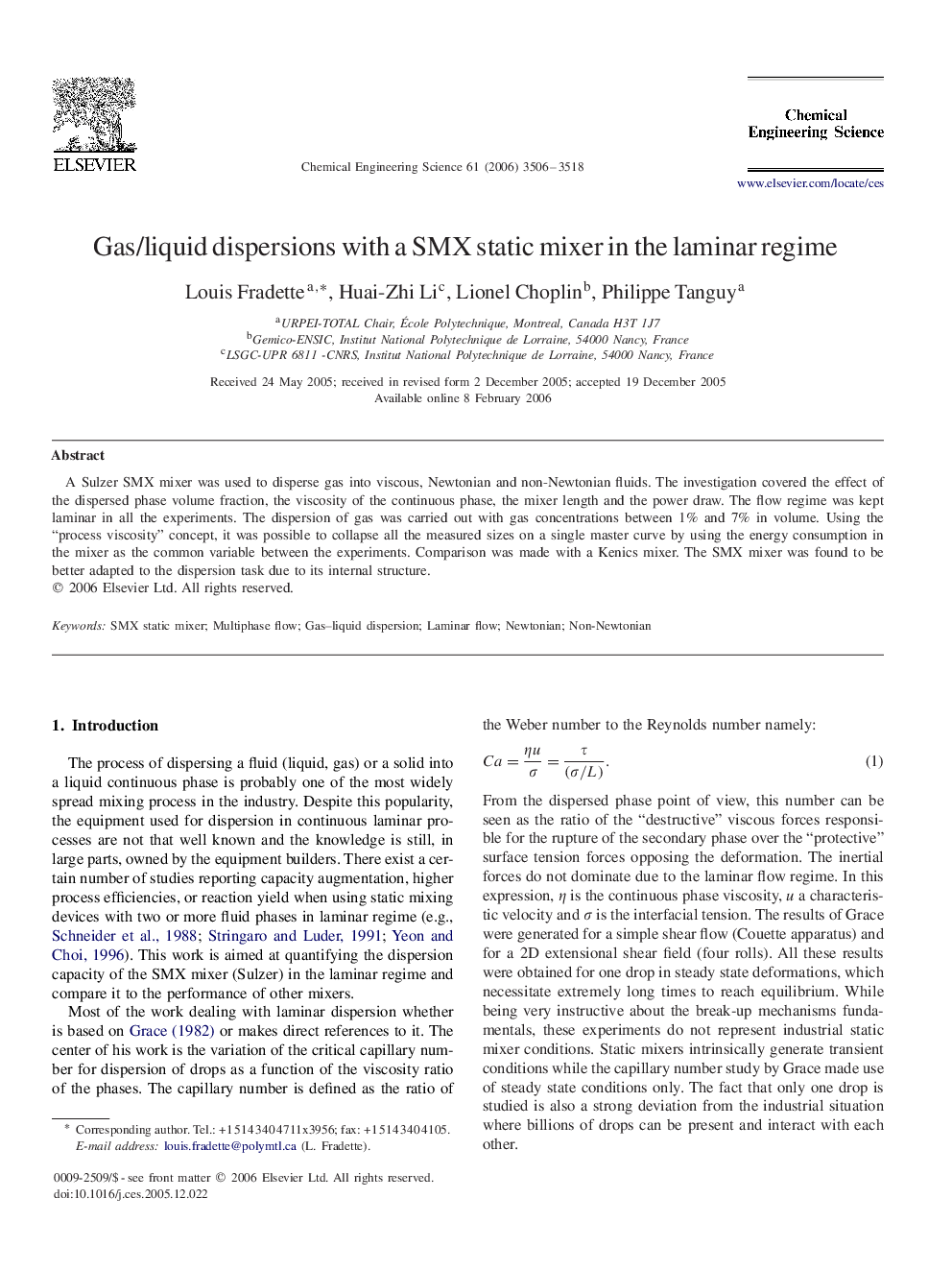| Article ID | Journal | Published Year | Pages | File Type |
|---|---|---|---|---|
| 160732 | Chemical Engineering Science | 2006 | 13 Pages |
Abstract
A Sulzer SMX mixer was used to disperse gas into viscous, Newtonian and non-Newtonian fluids. The investigation covered the effect of the dispersed phase volume fraction, the viscosity of the continuous phase, the mixer length and the power draw. The flow regime was kept laminar in all the experiments. The dispersion of gas was carried out with gas concentrations between 1% and 7% in volume. Using the “process viscosity” concept, it was possible to collapse all the measured sizes on a single master curve by using the energy consumption in the mixer as the common variable between the experiments. Comparison was made with a Kenics mixer. The SMX mixer was found to be better adapted to the dispersion task due to its internal structure.
Related Topics
Physical Sciences and Engineering
Chemical Engineering
Chemical Engineering (General)
Authors
Louis Fradette, Huai-Zhi Li, Lionel Choplin, Philippe Tanguy,
